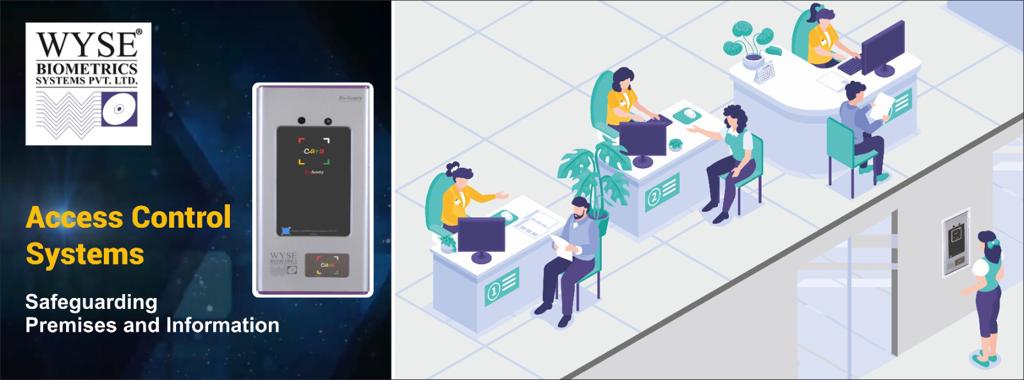Access Control Systems: Safeguarding Premises and Information:

Securing Spaces and Data: The Power of Access Control Systems"
In an age where security breaches and unauthorized access pose significant risks, access control systems have become vital for safeguarding premises and protecting sensitive information. These systems combine various technologies and strategies to ensure that only authorized individuals can enter restricted areas. This blog explores the importance of access control systems, their key components, and the benefits they offer in terms of security, operational efficiency, and data protection. From identification devices to management software, access control systems play a crucial role in maintaining the integrity and safety of physical spaces and digital assets.
Access control systems are designed to prevent unauthorized entry into secure locations, such as office buildings, data centers, research facilities, and government institutions. These systems serve as a frontline defense against physical and data breaches, offering several key benefits:
a) Enhanced Security: Access control systems provide a robust security mechanism by granting access only to authorized individuals. By using various authentication methods, such as biometrics, access cards, or PIN codes, these systems ensure that only authorized personnel can enter restricted areas.
b) Protection of Sensitive Information: In today's digital age, protecting sensitive data is paramount. Access control systems help secure digital assets by restricting access to authorized personnel only. This prevents unauthorized individuals from tampering with or stealing sensitive information, reducing the risk of data breaches and potential financial and reputational damages.
c) Operational Efficiency: Access control systems streamline access management processes, eliminating the need for traditional keys or manual checks. By automating access control, these systems save time, reduce administrative burdens, and enhance overall operational efficiency.
Key Components of Access Control Systems Access control systems consist of several key components that work together to enforce security measures and manage access permissions effectively:
a) Identification Devices: These devices are used to identify individuals seeking access. They can include biometric scanners (such as fingerprint readers or facial recognition cameras), access cards, key fobs, or PIN pads. Each device type offers different levels of security and convenience, depending on the specific requirements of the organization.
b) Control Panels: Control panels act as the central hub of an access control system. They receive input from the identification devices and make decisions regarding access permissions. These panels are responsible for authenticating users and sending signals to the locking mechanisms.
c) Locking Mechanisms: Locking mechanisms physically control entry points, ensuring that only authorized individuals can gain access. These mechanisms can include electric locks, electromagnetic locks, or motorized gates. They are triggered by the control panels based on the authorization received from the identification devices.
d) Management Software: Management software serves as the brain of the access control system. It allows administrators to configure access rules, manage user permissions, monitor access events, and generate reports. This software provides real-time visibility into access activities and enables efficient administration and control of the entire system.
Benefits of Access Control Systems Implementing access control systems offers numerous advantages for organizations:
a) Improved Security: Access control systems provide a high level of security by accurately verifying the identity of individuals before granting access. This prevents unauthorized entry and reduces the risk of theft, vandalism, or other security breaches.
b) Access Logging and Audit Trails: Access control systems generate detailed logs of access events, allowing administrators to track who accessed specific areas and at what times. This data can be invaluable fr investigations, compliance requirements, or internal audits.
c) Flexibility and Scalability: Access control systems can be tailored to meet the specific needs of different organizations. They can accommodate varying access levels, user groups, and time-based access permissions. Additionally, these systems are scalable, allowing for easy expansion or modification as organizational needs evolve.
d) Integration Capabilities: Access control systems can be seamlessly integrated with other security systems and technologies. They can work in conjunction with video surveillance systems, alarm systems, and visitor management systems, creating a comprehensive security infrastructure. This integration enhances overall situational awareness and response capabilities.
e) Remote Access Management: Many access control systems offer remote management capabilities, allowing administrators to control access permissions and monitor the system from a central location. This is particularly beneficial for organizations with multiple locations or those that require quick access adjustments, such as granting temporary access to visitors or contractors.
f) Compliance and Regulatory Requirements: Access control systems help organizations meet compliance and regulatory requirements by providing a secure and auditable access management system. This is particularly crucial for industries such as healthcare, finance,
Access control systems play a crucial role in safeguarding premises and protecting sensitive information. By combining identification devices, control panels, locking mechanisms, and management software, these systems provide robust security measures, enhance operational efficiency, and ensure compliance with regulatory requirements. Organizations that prioritize security and data protection can benefit greatly from implementing access control systems, as they offer a reliable and scalable solution to prevent unauthorized access and mitigate risks. With the constant advancements in technology, access control systems continue to evolve, adapting to emerging threats and providing organizations with the tools they need to maintain a secure and controlled environment.